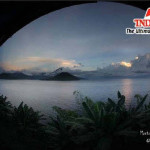카테고리: Travel
Created by: Senny Sapulete
Number of Blossarys: 1
 English (EN)
English (EN) Italian (IT)
Italian (IT) Czech (CS)
Czech (CS) Slovak (SK)
Slovak (SK) French (FR)
French (FR) Turkish (TR)
Turkish (TR) Portuguese, Brazilian (PB)
Portuguese, Brazilian (PB) German (DE)
German (DE) Greek (EL)
Greek (EL) Chinese, Hong Kong (ZH)
Chinese, Hong Kong (ZH) Chinese, Traditional (ZT)
Chinese, Traditional (ZT) Latvian (LV)
Latvian (LV) Thai (TH)
Thai (TH)
Pombo Island, located between Ambon Island and Haruku Island, has been officially declared a natural conservation area since 1973. Being kept uninhabited by human until today, this 1000-hectares ...
Soya village, located on the mountains about 4 km from Ambon city, was once the central spot of the oldest independent kingdom in Ambon Island, up to the arrival of Portuguese and Dutch occupiers. It ...
Siwalima Museum is located about 5 km from the capital of Maluku province, Ambon, exhibiting various artifacts of Maluku culture and arts, some even dating back to prehistoric times. It also contains ...
Morea are giant eels found only in the small lake of Way Selaka at Waai village, Ambon Island, called "morea" in local tongue, are up to 1-1.5 m in length and 20 kg in weight. Despite the gigantic ...
Pasir Panjang (literally, "long sand") beach, or Ngurbloat beach in local tongue, is well-known for its soft, powder-like sand and its no less than 3 km outstretched shore-line. Located near Tual, ...
Pintu Kota (literally, "door of the city") beach, located near Latuhalat village in Ambon Island, has its fame and uniqueness in a huge cliff, sticking toward the sea, with a big hole on it, shaped ...
Pukul manyapu (literally "broom hitting") is an age-old tradition in Mamala and Morela villages in Ambon Island, performed by 20 young men, divided in 2 groups, whipping each other with 1.5 m-long ...







